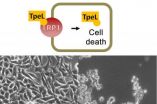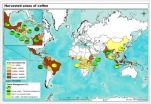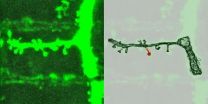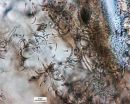(Press-News.org) Our ability to store memories improves during childhood, associated with structural changes in the hippocampus and its connections with prefrontal and parietal cortices. New research from UC Davis is exploring how these brain regions develop at this crucial time. Eventually, that could give insights into disorders that typically emerge in the transition into and during adolescence and affect memory, such as schizophrenia and depression.
Located deep in the middle of the brain, the hippocampus plays a key role in forming memories. It looks something like two curving fingers branching forward from a common root. Each branch is a folded-over structure, with distinct areas in the upper and lower fold.
"For a long time it was assumed that the hippocampus didn't develop at all after the first couple of years of life," said Joshua Lee, a graduate student at the UC Davis Department of Psychology and Center for Mind and Brain. Improvements in memory were thought to be due entirely to changes in the brain's outer layers, or cortex, that manage attention and stretagies. But that picture has begun to change in the past five years.
Recently, Lee, Professor Simona Ghetti at the Center for Mind and Brain and Arne Ekstrom, assistant professor in the UC Davis Center for Neuroscience, used magnetic resonance imaging to map the hippocampus in 39 children aged eight to 14 years.
While subfields of the hippocampus have been mapped in adult humans and animal studies, it's the first time that they have been measured in children, Ghetti said.
"This is really important to us, because it allows us to understand the heterogeneity along the hippocampus, which has been examined in human adults and other species" Ghetti said.
Looking at three subregions — the cornu ammonis (CA) 1, CA3/dentate gyrus and subiculum — they found that the first two expanded with age, with the most pronounced growth in the right hippocampus. Only in the oldest 25 percent of the children, within a few months either side of 14, did the sizes of all three regions decrease.
When they tested the children for memory performance, children with a larger CA3/dentate gyrus tended to perform better, they found. The work was published online March 15 by the journal Neuroimage.
In a related study in collaboration with the laboratory of Professor Silvia Bunge at UC Berkeley, published March 27 in Cerebral Cortex, the researchers also demonstrated how white matter connections projecting from the hippocampus to the brain cortex are related to memory function in children.
"White matter" tracts connect the prefrontal and parietal regions of the brain cortex, which control how we pay attention to things and engage in memory strategies, with the media-temporal lobe, the area that includes the hippocampus.
In the study, children performed a memory test that prompted them either to actively memorize an item — and therefore engage the prefrontal and parietal cortices — or to view an image passively. The ability to successfully modulate attention was linked to development of white matter tracts linking the prefrontal and parietal cortex tothe mediatemporal lobe, Ghetti said, but not to fronto-parietal connections.
Lead author on the paper is UC Berkeley researcher Carter Wendelken, with coauthors Lee, Bunge and Ghetti as well as Jacqueline Pospisil, Marcos Sastre and Julia Ross, all at UC Davis. It's part of a large collaborative study of memory function and brain growth in children, lead by Ghetti and Bunge, and funded by the National Institutes of Health. The study will look at the development of in a cohort of children from age eight to 14 years.
INFORMATION:
How kids' brain structures grow as memory develops
2014-04-16
ELSE PRESS RELEASES FROM THIS DATE:
Theoretical biophysics: Adventurous bacteria
2014-04-16
To reproduce or to conquer the world? Surprisingly, bacteria also face this problem. Theoretical biophysicists at Ludwig-Maximilians-Universitaet (LMU) in Munich have now shown how these organisms should decide how best to preserve their species.
The bacterium Bacillus subtilis is quite adaptable. It moves about in liquids and on agar surfaces by means of flagella. Alternatively, it can stick to an underlying substrate. Actually, the bacteria proliferate most effectively in this stationary state, while motile bacteria reproduce at a notably lower rate.
In order to sustain ...
Significant baseline levels of arsenic found in Ohio soils are due to natural processes
2014-04-16
RICHLAND, Wash. – Geologic and soil processes are to blame for significant baseline levels of arsenic in soil throughout Ohio, according to a study published recently in the Journal of Environmental Quality.
The analysis of 842 soil samples from all corners of Ohio showed that every single sample had concentrations higher than the screening level of concern recommended by the U.S. Environmental Protection Agency. The findings should not alarm the public, say the authors, who note that regulatory levels typically are set far below those thought to be harmful. Rather, the ...
Preterm births, multiples, and fertility treatment
2014-04-16
While it is well known that fertility treatments are the leading cause of increases in multiple gestations and that multiples are at elevated risk of premature birth, these results are not inevitable, concludes an article in Fertility and Sterility. The article identifies six changes in policy and practice that can reduce the odds of multiple births and prematurity, including expanding insurance coverage for in vitro fertilization (IVF) and improving doctor-patient communications about the risks associated with twins.
Financial pressures provide a powerful incentive for ...
Gate for bacterial toxins found
2014-04-16
Prof. Dr. Dr. Klaus Aktories and Dr. Panagiotis Papatheodorou from the Institute of Experimental and Clinical Pharmacology and Toxicology of the University of Freiburg have discovered the receptor responsible for smuggling the toxin of the bacterium Clostridium perfringens into the cell. The TpeL toxin, which is formed by C. perfringens, a pathogen that causes gas gangrene and food poisoning. It is very similar to the toxins of many other hospital germs of the genus Clostridium. The toxins bind to surface molecules and creep into the body cell, where they lead to cell death. ...
Scientists explain how memories stick together
2014-04-16
LA JOLLA—Scientists at the Salk Institute have created a new model of memory that explains how neurons retain select memories a few hours after an event.
This new framework provides a more complete picture of how memory works, which can inform research into disorders liked Parkinson's, Alzheimer's, post-traumatic stress and learning disabilities.
"Previous models of memory were based on fast activity patterns," says Terry Sejnowski, holder of Salk's Francis Crick Chair and a Howard Hughes Medical Institute Investigator. "Our new model of memory makes it possible to ...
Shade grown coffee shrinking as a proportion of global coffee production
2014-04-16
The proportion of land used to cultivate shade grown coffee, relative to the total land area of coffee cultivation, has fallen by nearly 20 percent globally since 1996, according to a new study by scientists from The University of Texas at Austin and five other institutions.
The study's authors say the global shift toward a more intensive style of coffee farming is probably having a negative effect on the environment, communities and individual farmers.
"The paradox is that there is greater public interest than ever in environmentally friendly coffee, but where coffee ...
Synapses -- stability in transformation
2014-04-16
This news release is available in German. Synapses are the points of contact at which information is transmitted between neurons. Without them, we would not be able to form thoughts or remember things. For memories to endure, synapses sometimes have to remain stable for very long periods. But how can a synapse last if its components have to be replaced regularly? Scientists from the Max Planck Institute of Neurobiology in Martinsried near Munich have taken a decisive step towards answering this question. They have succeeded in demonstrating that when a synapse is formed, ...
Scratching the surface: Microbial etchings in impact glass and the search for life on Mars
2014-04-16
Boulder, Colo., USA – Haley M. Sapers and colleagues provide what may be the first report of biological activity preserved in impact glass. Recent research has suggested that impact events create novel within-rock microbial habitats. In their paper, "Enigmatic tubular features in impact glass," Sapers and colleagues analyze tubular features in hydrothermally altered impact glass from the Ries Impact Structure, Germany, that are remarkably similar to the bioalteration textures observed in volcanic glasses.
The authors note that mineral-forming processes cannot easily ...
Cancer drugs block dementia-linked brain inflammation, UCI study finds
2014-04-16
Irvine, Calif., April 16, 2014 — A class of drugs developed to treat immune-related conditions and cancer – including one currently in clinical trials for glioblastoma and other tumors – eliminates neural inflammation associated with dementia-linked diseases and brain injuries, according to UC Irvine researchers.
In their study, assistant professor of neurobiology & behavior Kim Green and colleagues discovered that the drugs, which can be delivered orally, eradicated microglia, the primary immune cells of the brain. These cells exacerbate many neural diseases, including ...
Recycling industrial waste water
2014-04-16
A research group composed of Dr. Martin Prechtl, Leo Heim and their colleagues at the University of Cologne's Department of Chemistry has discovered a new method of generating hydrogen using water and formaldehyde. The generation of hydrogen from liquids is of particular interest when it comes to fuel cell technologies. The results of the project, entitled "Selective and mild hydrogen production using water and formaldehyde", have recently been published in the journal Nature Communications.
Among other applications, the new approach can be used to recycle industrial ...






